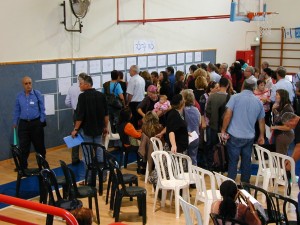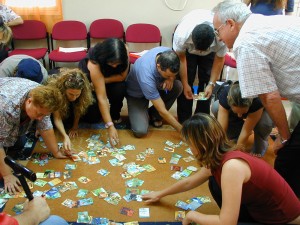Ramot Open Space Initiative – Steering Committee, November 9, 2008
In 2008, the Ramot Community Council asked the JICC’s assistance in creating a participatory community development process in the neighborhood. The selected model was Open Space Technology, a powerful methodology that encourages large groups of participants, in this case residents, leaders, activists and professionals, to engage in the process with both their passion and responsibility for action. To prepare for the Open Space event in December 2008 we formed a steering committee that includes all relevant stakeholders. The committee then discussed main topics for the event and ways to engage the community in large in the process.
Today, we held the last meeting of the steering committee, with seven members of the Ramot Community Council Board. We were impressed by the energy and enthusiasm of the committee members, and by their commitment to recruit as many residents as possible for the Open Space event. The event will take place during two evenings on December 10 and 16. Together with the neighborhood community worker and other staff of the community council the residents will help prepare and promote the event.
During the meeting it was also well understood that the municipal elections on November 11 will affect the dynamics in the neighborhood in general and of the event in particular. The local Haredi/non-Haredi rifts and the demographic changes that occurred in the neighborhood are important factors in the development of civil society in the Ramot community.







